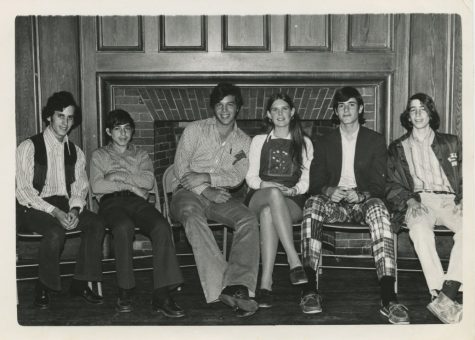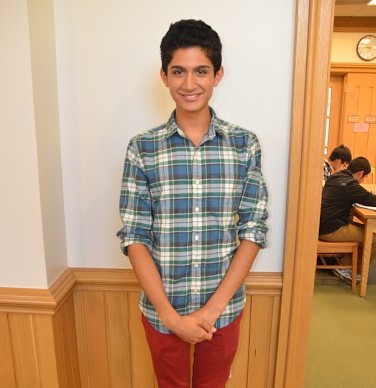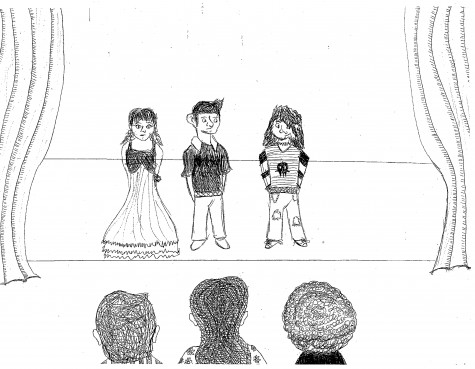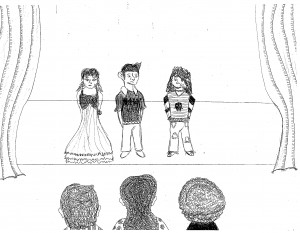Gender bender: Dress code moves past gender binary
October 20, 2017
Gender neutral is a term that has been tossed around recently from social activists to celebrities to social media. It also applies to the modified school-wide dress code.
While the dress code remains largely the same, there are a few key aspects missing.
For starters, the individual sections designating dress for boys and girls has been combined into one general section, void of any rules designated by gender. It requires that all students wear, “shirts with collars (e.g. golf shirts, dress shirts, rugby shirts, turtlenecks), blouses, or sweaters,” pants, skirts, or dresses (that do not exceed five inches above the knee).
Also absent are rules about hair length, hair color, facial hair, and piercings, as well as the requirement that shirts should be tucked in.
The biggest change [to the dress code] was the removal of gender – we don’t need the binary of boys must wear one thing and girls must wear another”
— Andy King
This movement from the binary gender system was made to ensure that Hackley is a more inclusive environment, where students should feel welcome to express their identities, and adhere to the motto: “United we help one another”.
“I am very excited to be able to dye my hair whatever color I want, or get any piercings I want (if my mom lets me). [The new dress code] is letting us express ourselves much more and I like that a lot,” said junior Zaya Gooding.
Senior Javon Coleman added that he thought, “the new, gender neutral dress code is beneficial to all students, and especially help guys and girls find a middle ground in fairness as far as what’s acceptable and what’s not.” He did however, express concern that, “although [the dress code] was made to be equal for everyone and has the right idea in mind, [it] still may restrict some people from expressing their style in ways that would fit them better.”
For example, some students feel that the rules restricting t-shirts and blue denim are strict. The ambiguity of the t-shirt rule counters this thought by allowing teachers to determine whether or not a shirt remains within the limits of the rules. The purpose of the dress code is to demonstrate respect for the school’s values, and it is up to the administration to warden what kinds of clothes exemplifies that respect.
School has just begun, and only time will determine the success of the new dress code.
The change follows suit of other schools in the Ivy Preparatory League – Riverdale Country School, Fieldston Ethical Culture School, and Horace Mann School all have gender neutral dress codes. The section in the Fieldston handbook regarding dress code states that, “All members of the community need to dress appropriately for a learning environment, which means without showing a lot of skin or undergarments, and without displaying pictures or slogans that are likely to offend members of the community.”
While dress codes like Fieldston’s allow for a more general interpretation, the end goal is the same; the gender binary no longer has a role in the schools’ dress codes.
“The biggest change was the removal of gender – we don’t need the binary of boys must wear one thing and girls must wear another because students who are questioning that or are in between shouldn’t feel another area of pressure in their lives,” said Director of the Upper School, Andy King.
Hackley’s shift in dress code demonstrates the administration’s attentiveness towards important matters like gender neutrality. The rules are always up for reconsideration, but Hackley remains a place dedicated to cultivating an inclusive environment for all.









![Although the affect of COVID-19 has been on a decline with less cases and deaths allowing most of us to remain mask free, people on the Hilltop are still choosing to mask up. Personal health concerns as well as helping an elderly neighbor are reasons as to why middle school science teacher Emma Olsen still wears a mask years after the COVID-19 pandemic began. Since I am helping take care of him, you know I go over to work with his dogs, that kind of thing; I dont want to bring [the virus] home to him, Ms. Olsen said.](https://hsdial.org/wp-content/uploads/2024/03/IMG_1713-450x600.jpg)








